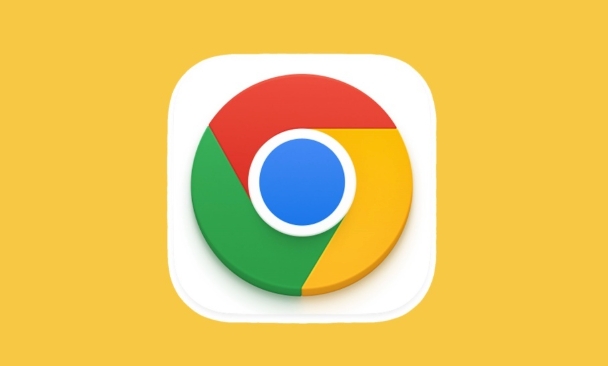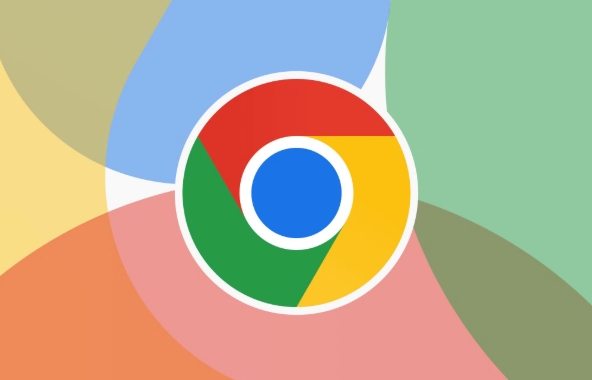How to fix Chrome's autofill not working on a specific site
Jul 14, 2025 am 12:42 AMChrome Autofill does not pop up suggestions on specific websites, which may be due to website disabling Autofill, not enabling settings, cache exceptions, extended interference, or browser version problems. 1. Confirm whether the website has disabled Autofill. If the prompt "Autofill disabled by site", it cannot be enabled; 2. Check whether Chrome's automatic filling settings are enabled and add test information; 3. Clear the website cache and hard refresh the page or new window; 4. Disable extensions to troubleshoot interference, especially script injection plug-ins; 5. Update Chrome or reset the default settings to solve the problem.

Chrome's autofill function works fine on most websites, but sometimes a specific website just doesn't pop up autofill suggestions. This question may take you a lot of time when filling out the form. When encountering this situation, don’t rush to reinstall the browser or clear all data. In fact, there are several common reasons and corresponding solutions to try.

1. Confirm whether Autofill is disabled on the site
Some websites will actively ban the browser's automatic filling function for security reasons or design issues. If you have problems on only one website, this is likely to be one of the reasons.
- You can try manually clicking the "Key" icon (right of the address bar) that will appear next to the input box to see if there is a saved account password prompt.
- If you see the prompt "Autofill disabled by site", it means that this website does limit the automatic filling function and can only be entered manually at this time.
This type of limitation is usually caused by autocomplete="off" or similar settings in the web page code. The user cannot modify it directly, so you can only contact the website administrator for feedback.

2. Check whether Chrome's Autofill settings are enabled
Although global settings generally do not make errors, settings may be reset after occasionally updating, syncing, or switching accounts.
You can check this way:

- Open Chrome Settings > Autofill
- Make sure options such as "Address and More", "Payment Method", and "Password" are enabled
- Try manually adding a test message, such as a temporary email or address, and then refreshing the target website to try it
If these settings are OK, but there is still no suggestion to pop up, you can try the next step.
3. Clear the website cache and reload the page
Sometimes browser cache or page incomplete loading can also cause autofill to fail.
You can do this:
- Right-click the refresh button on the target website page and select "Clear cache and hard reload"
- Or press
Ctrl F5(Windows) orCmd Shift R(Mac) to force refresh - Try filling in the form again to see if the autofill restores work
In addition, you can also try to close the current tab page, open a new window to access the website, and exclude plug-ins or other tags.
4. Disable extension troubleshooting
Some ad blocking plugins, privacy tools, or script managers may affect Chrome's autofill behavior.
You can test it like this:
- Go to Chrome Settings > Extensions and temporarily disable all extensions
- Reopen the target website and test whether the automatic filling is restored to normal
- If it is valid, then enable the extension one by one to find out which conflicts
Common "suspects" include: uBlock Origin, Privacy Badger, Dark Reader, etc., especially those plug-ins that inject scripts into pages.
5. Update Chrome or reset settings
If none of the above methods are useful, you can try the following two directions:
- Update Chrome : Make sure your browser is the latest version, and there may be compatibility issues with older versions
- Reset settings : Go to Settings > Reset settings > Restore default settings. Note that this will not delete the bookmarks and passwords, but will clear some personalized configurations
Basically these common ways of handling it. Some problems are caused by the limitations of the website itself and are not something you can control; most of the time, it can be solved by cleaning up the cache, checking settings or troubleshooting plug-ins. Don’t be too anxious when encountering similar situations, just do it step by step.
The above is the detailed content of How to fix Chrome's autofill not working on a specific site. For more information, please follow other related articles on the PHP Chinese website!

Hot AI Tools

Undress AI Tool
Undress images for free

Undresser.AI Undress
AI-powered app for creating realistic nude photos

AI Clothes Remover
Online AI tool for removing clothes from photos.

Clothoff.io
AI clothes remover

Video Face Swap
Swap faces in any video effortlessly with our completely free AI face swap tool!

Hot Article

Hot Tools

Notepad++7.3.1
Easy-to-use and free code editor

SublimeText3 Chinese version
Chinese version, very easy to use

Zend Studio 13.0.1
Powerful PHP integrated development environment

Dreamweaver CS6
Visual web development tools

SublimeText3 Mac version
God-level code editing software (SublimeText3)

Hot Topics
 How to stop Chrome from updating in the background on Mac
Jul 21, 2025 am 12:41 AM
How to stop Chrome from updating in the background on Mac
Jul 21, 2025 am 12:41 AM
To prevent Chrome from automatically updating on Mac, it can be done by disabling update services, modifying permissions, and restricting network access. 1. Use terminal commands to disable the GoogleSoftwareUpdate daemon to prevent background updates; 2. Modify update directory permissions to prevent Chrome from starting the update process by itself; 3. Restrict Chrome's outbound network connection through system firewall or third-party tools to further eliminate update requests. Using these methods in combination can effectively prevent Chrome from being automatically updated.
 How to fix Chrome's spell checker not working
Jul 20, 2025 am 12:03 AM
How to fix Chrome's spell checker not working
Jul 20, 2025 am 12:03 AM
When Chrome spelling check fails, you can troubleshoot and fix it by following the following steps: 1. Confirm that the "Use Spelling Check" function is enabled and check whether the corresponding language is enabled in the language settings; 2. Adjust the input language order, delete the redundant language, and ensure that the main language enables spelling check; 3. Close possible conflicting extensions, especially syntax or translation plug-ins; 4. Update Chrome to the latest version and check the operating system updates. If it still doesn't work, try resetting Chrome settings.
 How to manage multiple users in Chrome
Jul 16, 2025 am 12:55 AM
How to manage multiple users in Chrome
Jul 16, 2025 am 12:55 AM
To add multiple users, click the avatar in the upper right corner to select "Add" or "Manage other users", add an account or create a guest account, and after setting it, you can use their respective bookmarks, history and extensions independently. Each user data is completely isolated, including passwords, plug-ins, automatic filling information, etc. To delete a user, go to Settings > Profile, select a user and click "Remove from this device", or you can also modify the user name and avatar for identification at any time.
 How to stop Chrome from automatically opening PDF files
Jul 21, 2025 am 12:09 AM
How to stop Chrome from automatically opening PDF files
Jul 21, 2025 am 12:09 AM
To let Chrome download directly instead of opening it when clicking on the PDF link, 1. Enter chrome://settings/content/pdfDocuments to check "DownloadPDFfilesinsteadofautomatically opening theminChrome"; 2. Check whether there are plug-ins such as Lightpdf or Smallpdf interfering behavior, you can try to disable the test; 3. You can use the developer tools to copy the link and paste the new tag to trigger the download. The above methods can be selected according to the situation.
 How to fix Chrome not opening mailto: links in Gmail
Jul 17, 2025 am 12:10 AM
How to fix Chrome not opening mailto: links in Gmail
Jul 17, 2025 am 12:10 AM
The main reason Chrome does not open the mailto: link directly in Gmail is that the default mail client is not set correctly or Gmail is not registered as an application that handles the mailto: protocol. Solutions include: 1. Set Gmail as the default mail application in Windows settings; 2. Enable Gmail protocol processing permissions in Chrome and set as default; 3. Manually click on the mailto: link to contact the Gmail registration protocol; 4. Use Chrome plug-in such as Mailto:forGmail to force jump. In most cases, it can be solved through system and browser settings, and the plug-in can be used as a backup solution.
 How to clear the HSTS cache for a site in Chrome
Jul 17, 2025 am 12:25 AM
How to clear the HSTS cache for a site in Chrome
Jul 17, 2025 am 12:25 AM
To clear the HSTS cache in Chrome, visit the chrome://net-internals/#hsts page, find the "Deletedomainssecuritypolicies" section, enter the target domain name and click "Delete". 1. Open Chrome's HSTS management page; 2. Enter the domain name in "Deletedomainsecuritypolicies" and delete it; 3. Test whether it is successful and try to access the website through http://. Note: This operation only deletes the HSTS rules for specific domain names. If you revisit the website via HTTPS, the browser may enable HSTS again. For inaccessible
 Chrome keeps opening new tabs by itself
Jul 22, 2025 am 12:22 AM
Chrome keeps opening new tabs by itself
Jul 22, 2025 am 12:22 AM
The problem of Chrome automatically popping up new tabs is usually caused by malicious extensions, advertising scripts, or browser hijacking. The solutions are as follows: 1. Check and uninstall suspicious extensions, especially ad-class plug-ins; 2. Clear browser caches and cookies to eliminate data corruption; 3. Check whether the homepage and default search engine settings have been tampered with and manually corrected; 4. Use antivirus software such as WindowsDefender or Malwarebytes to scan and clear potential malware; 5. Finally, try resetting Chrome settings to restore the default configuration. Troubleshooting in this order can effectively solve most abnormal labeling problems.
 How to fix Chrome profile sync getting stuck in setup
Jul 25, 2025 am 01:10 AM
How to fix Chrome profile sync getting stuck in setup
Jul 25, 2025 am 01:10 AM
The problem of Chrome sync stuck can be solved through the following steps: 1. Check the network connection and Google account status to ensure normal access; 2. Log out and log in to the Chrome account again; 3. Clear the synchronized data and restart the browser; 4. Reset Chrome settings; 5. Try the traceless mode or new user profile. Sequentially checking can effectively restore the synchronization function.






